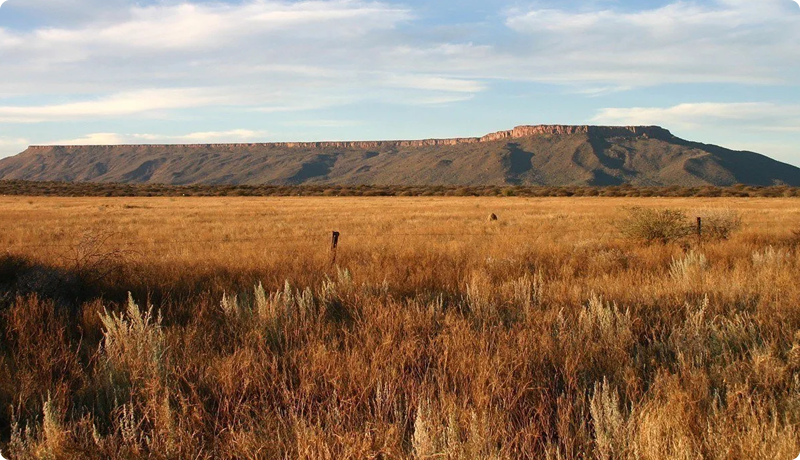

Nestled in the heart of northern Namibia, the Waterberg Plateau Park stands as a testament to nature's grandeur and a sanctuary for diverse ecosystems. This elevated plateau, with its towering sandstone cliffs and verdant landscapes, offers a unique and captivating experience for nature enthusiasts, conservationists, and adventure seekers alike.
The Waterberg Plateau, rising majestically from the surrounding plains, is a geological marvel that captures the imagination. Composed of sedimentary rock, the plateau stands about 200 meters above the surrounding landscape, providing a dramatic backdrop against the vast African sky. The unique sandstone formations hold secrets of ancient times, whispering tales of geological evolution over millions of years.
Beyond its geological splendor, Waterberg Plateau Park is a biodiversity hotspot. The diverse habitats range from dense bushveld to open grasslands, creating a haven for a wide array of flora and fauna. Rare and endangered species find refuge here, including the white Rhinoceros and Sable Antelope. Birdwatchers will be delighted by the park's avian diversity, with over 200 species recorded, including the vibrant Violet Wood-hoopoe and majestic Verreaux's Eagle.
Waterberg Plateau Park is not only a natural wonder but also a conservation success story. The park has played a crucial role in the preservation of endangered species, particularly the white rhinoceros. Successful breeding programs and anti-poaching efforts have contributed to the population's stability, offering a glimmer of hope in the face of global conservation challenges.
For those seeking an immersive experience, Waterberg Plateau Park provides a network of trails that wind through its diverse landscapes. Hiking enthusiasts can explore the plateau's summit, offering panoramic views of the surrounding plains. The trails vary in difficulty, accommodating both casual strollers and avid hikers. Along the way, interpretive signs provide insights into the park's ecology, history, and significance.
Waterberg Plateau Park holds cultural and historical importance for Namibia. The Herero people, who have inhabited the region for centuries, consider the plateau sacred. The park also bears witness to historical events, including the Battle of Waterberg in 1904 during the Herero and Nama uprising against German colonial forces.
Visitors to Waterberg Plateau Park are encouraged to embrace responsible tourism practices, respecting the delicate balance of nature and contributing to the ongoing conservation efforts. The park's allure lies not only in its breathtaking landscapes but also in the commitment to preserving the richness of Namibia's natural heritage.
In the embrace of Waterberg Plateau Park, nature unfolds its tapestry, weaving together geological wonders, diverse ecosystems, and cultural significance. This Namibian jewel invites all who venture here to witness the resilience of life and the beauty of conservation in action. As the sun sets behind the sandstone cliffs, casting a warm glow over the plains, Waterberg Plateau Park stands as a timeless testament to the harmonious coexistence of nature and humanity in Namibia's pristine landscapes.
All rights reserved by Africa Tourism information. Another website by Maestro Media